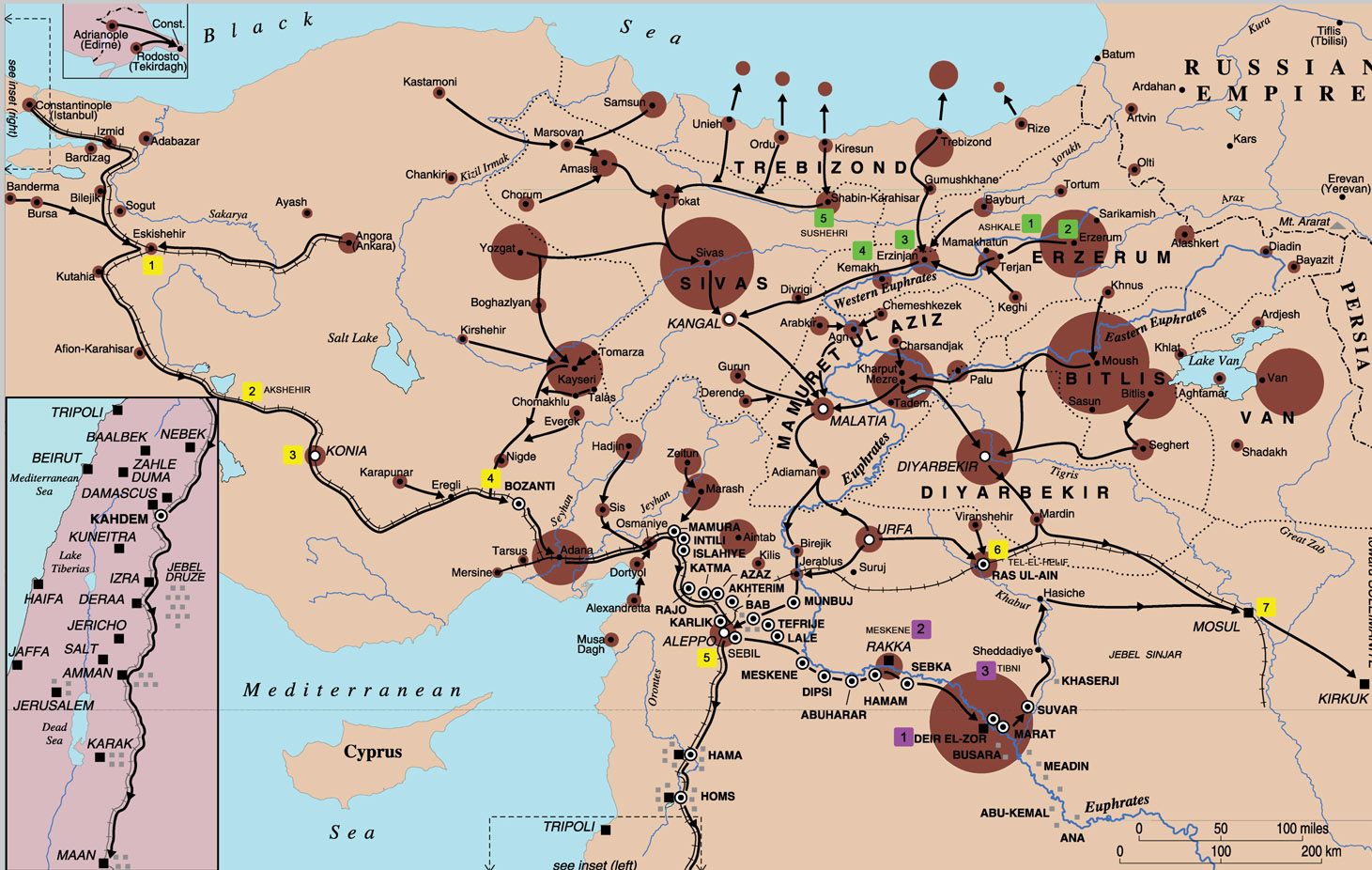WASHINGTON, DC — The Armenian National Institute (ANI), the Armenian Genocide Museum of America (AGMA), and the Armenian Assembly of America (AAA) issued a joint statement upon the release of WITNESS TO THE ARMENIAN GENOCIDE: Photographs by the Perpetrators’ German and Austro-Hungarian Allies, a digital exhibit that the three organizations are making available for display without charge.
The newly-created digital display instructional posters are being released in advance of the month of April as a public service to educational institutions and the worldwide Armenian community. The poster set may be downloaded from the ANI, AGMA, and AAA websites and printed in any size suitable for instructional, exhibit, classroom, and public education purposes. Designed to be printed in a full-size poster format of 24″ by 36″ or bigger, the publication is also legible and usable at the 8.5″ by 11″ standard letter-size format in booklet or flyer mode.
The ten-poster set includes an introductory page, a detailed timeline, a color-coded map geographically matching the photographs with their location, and seven pages displaying 34 captioned historic photographs. The color-coded map in the exhibit is based on the previously-published ANI map of the 1915 Armenian Genocide in the Ottoman Empire illustrating the three prevailing aspects of the Genocide: the deportations, the massacres, and the concentration camps.
Photographic evidence on the Armenian Genocide is extremely rare. Although Imperial Germany and the Ottoman Empire were military allies during World War I, the Ottoman Turkish authorities responsible for the Armenian Genocide prohibited taking pictures and closely watched anyone suspected of owning a camera. Despite the threat of a court martial, several German civilians and other German military officials assigned to the Ottoman Empire during the war disregarded the ban and secretly photographed the mistreatment of the Armenian population.
The exhibit is the product of years of research in European archives conducted by Dr. Hilmar Kaiser. Many of the photographs in the exhibit were uncovered for the first time after decades of neglect. The photographs showing Armenian deportees are matched with diary entries, reports, and memoirs of the photographers and in so doing documenting their authenticity. The photographers represented include Hellmuth von Mücke at Der Zor, Victor Pietschmann who witnessed the deportation of Armenians from Sushehri, Max Erwin von Scheubner-Richter, the German Vice-Consul in Erzerum, and Armin T. Wegner in Aleppo and surrounding refugee camps.
As part of their ongoing program to promote the teaching of genocide and human rights and the lessons of the Armenian Genocide, ANI and AGMA recommend utilizing the poster set in conjunction with the recently-released fourth edition of Centuries of Genocide: Essays and Eyewitness Accounts, by Samuel Totten and William S. Parsons, a textbook widely used in college and high school courses, that includes an extensive chapter on the Armenian Genocide.
As part of its continuing service to educators and to coincide with the release of the poster set and Centuries of Genocide, ANI previously announced the launch of its expanded Resource Guide and other sections of the Education component of the ANI website. Dozens of resources selected for their instructional value are listed for the benefit of students and teachers. Educators interested in teaching about the role of American humanitarianism and involvement in responding to the Armenian crisis can also benefit from the recently issued fact sheet summarizing The United States Record on the Armenian Genocide: A Proud Chapter in American History, prepared by the Armenian Assembly of America.
As a preview to the digital exhibit, the introduction to the posters is reproduced below:
The German Military Mission to the Ottoman Empire was established in 1913. German officers served on the Ottoman General Staff in Constantinople, and some were in leading positions with the Ottoman armies on various fronts during World War I. These men became eye-witnesses to the Armenian Genocide.
As a rule, German officers followed a policy of non-interference in what was claimed to be an internal affair of the Ottoman Empire. On the other hand, numerous officers tried to mitigate Ottoman policies and a few, in defiance of military regulations, even took part in clandestine activities to help the victims. Together, these officers, German consular staff, missionaries, and administrators of the Deutsche Bank-owned Anatolian and Baghdad Railways played a critical role in the creation of a humanitarian resistance network that included American missionaries and diplomats, surviving Armenians, and even some Ottoman officials.
Ottoman Martial Law prohibited taking photographs of the Armenian deportees. Thus, documenting the crime by photographing the reality of the deportations became an act of resistance. Many photographs were lost due to the interception of Ottoman intelligence services at the time and later destruction in Germany during World War II. Many of these photographs had been forgotten for decades and remained hidden in dusty drawers, files, and private collections.
The Armenian Genocide was a planned campaign by the Young Turk government to annihilate the Christian Armenian population of the Ottoman Empire. Embarked upon in 1915, during WWI, the deportation and decimation of the Armenians across Anatolia, modern-day Turkey, continued until 1923. The campaign resulted in the complete destruction of Armenian society across the region and in the greater part of its historic homeland.











1 comment
I wish to print wide format posters for our church commemorating the 100 year armenian genocide. Does anyone know where I can download any digital files concerning the genocide? I need vector art in order to be able to enlarge the file. Any help will be appreciated.